What’s encoding and decoding
Experiencing The Different Genre Movies Online
September 10, 2021Prime four Advantages of Using Social Media Sites
September 10, 2021Encoding and decoding are utilized in many types of communications, including computing, data communications, programming, digital electronics and human communications. These processes involve altering the format of content for optimum transmission or storage.
In computer systems, encoding is the process of placing a sequence of characters (letters, numbers, punctuation, and sure symbols) into a specialised format for environment friendly transmission or storage. Decoding is the opposite process — the conversion of an encoded format back into the unique sequence of characters.
These terms shouldn’t be confused with encryption and decryption, which deal with hiding and securing data. (We are able to encrypt data without changing the code or encode data without deliberately concealing the content.)
What’s encoding and decoding in data communications?
Encoding and decoding processes for data communications have interesting origins. For example, Morse code emerged in 1838 when Samuel Morse created standardized sequences of two signal durations, called dots and dashes, to be used with the telegraph. Right this moment’s newbie radio operators still use Q-signals, which advanced from codes the British Postmaster General created in the early 1900s to ease communication among British ships and coast stations.
Internet access relies on encoding. A Uniform Resource Locator (URL), the address of a webpage, can only be sent over the internet using the American Customary Code for Information Interchange (ASCII), which is the code used for textual content files in computing.
In an ASCII file, a 7-bit binary number represents every character, which could be highercase or lowercase letters, numbers, punctuation marks and other frequent symbols. However, URLs can not comprise spaces and often have characters that aren’t in the ASCII character set. URL encoding, also called p.c encoding, addresses this by means of the conversion of spaces — to a + sign or with %20 — and non-ASCII characters into a legitimate ASCII format.
Some ways encoding and decoding are used in numerous programming languages include the following.
In Java
Encoding and decoding in Java is a technique of representing data in a distinct format to efficiently switch data via a network or the web. The encoder converts data into a web representation. As soon as obtained, the decoder converts the web representation data into its authentic format.
In Python
Within the Python programming language, encoding represents a Unicode string as a string of bytes. This commonly happens if you switch an occasion over a network or save it to a disk file. Decoding transforms a string of bytes into a Unicode string. This occurs while you obtain a string of bytes from a disk file or the network.
In Swift
Within the Apple Swift programming language, encoding and decoding models typically represent a serialization of object data from a JavaScript Object Notation string format. In this case, encoding represents serialization, while decoding signifies deserialization. Whenever you serialize data, you exchange it into an easily transportable format. Once transported, it converts back into its unique format. This approach standardizes the protocol and enables interoperability between different programming languages and platforms.
What is encoding and decoding in digital electronics?
In electronics, the phrases encoding and decoding reference analog-to-digital conversion and digital-to-analog conversion. These phrases can apply to any type of data, including text, images, audio, video, multimedia and software, and to signals in sensors, telemetry and control systems.
What is encoding and decoding in human communication?
Individuals don’t think about it as an encoding or decoding process, however human communication begins when a sender formulates (encodes) a message. They choose the message they will convey and a communication channel. People do this each day with little thought to the encoding process.
The receiver should make sense of (decode) the message by deducing the that means of words and phrases to interpret the message correctly. They then can provide feedback to the sender.
Both the sender and receiver in any communication process should deal with noise that may get in the way of the communication process. Noise entails the various ways that messages get disrupted, distorted or delayed. These can embody precise physiological noise, technical problems or semantic, psychological and cultural issues that get in the way of communication.
If you adored this post and you would certainly such as to receive more details relating to signal decoder software kindly check out the webpage.

